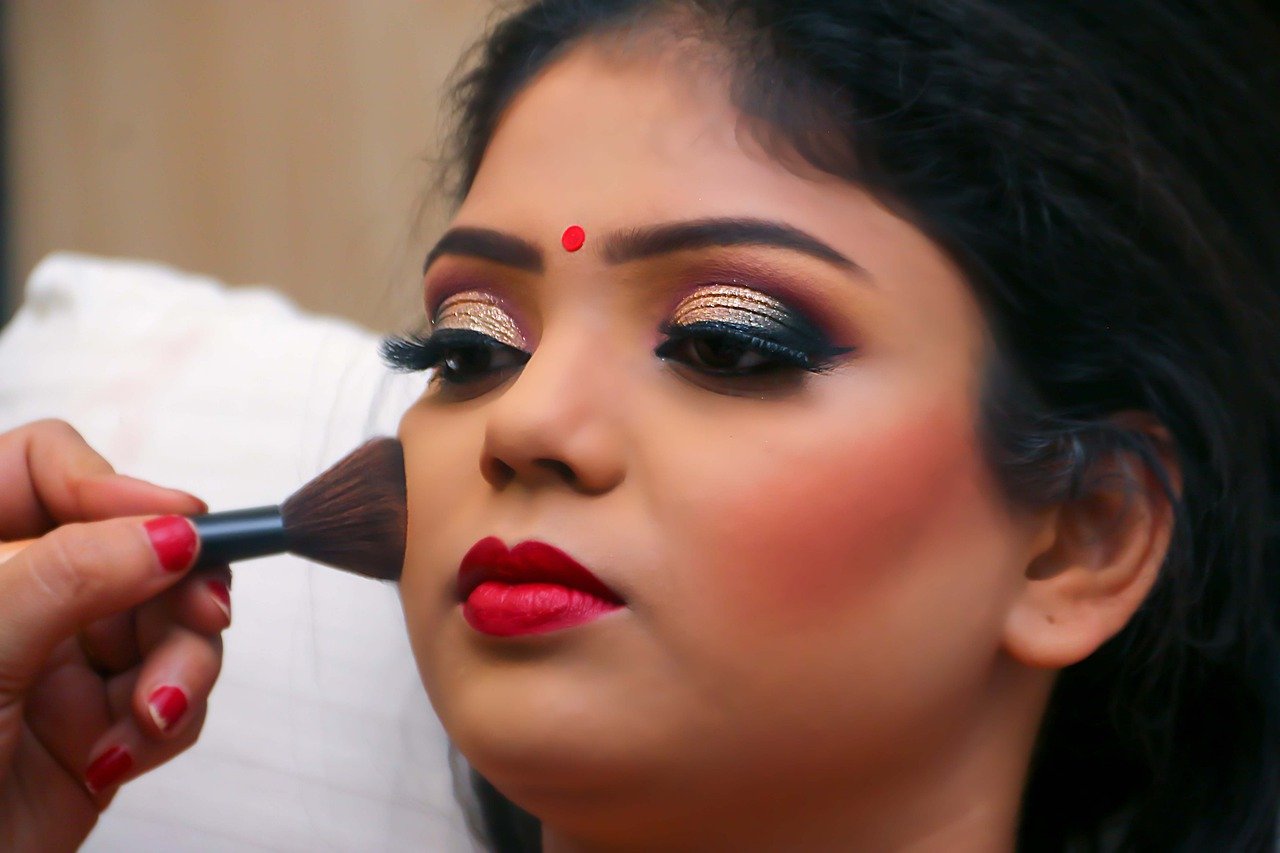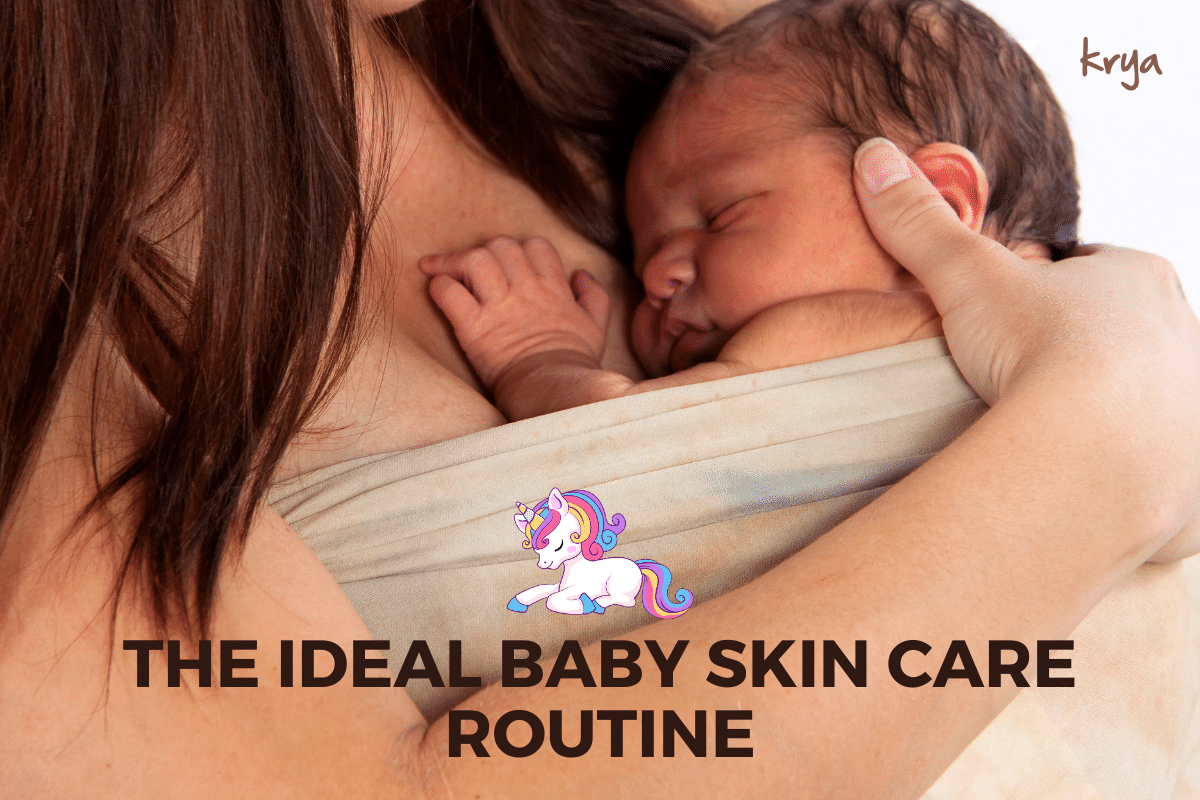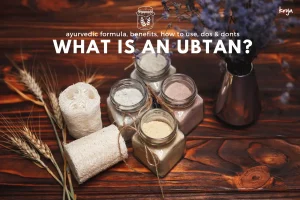This post was last updated on November 21, 2022 by Preethi Sukumaran
What happens when you don’t remove makeup with a proper makeup cleanser & leave it on at night? When we posed this question to our customers who use makeup regularly, many reported experiencing a bad reaction to their skin and appearance. Some said they woke up with a severe breakout the next day. Others said that they had to apply even more makeup because not removing it earlier made the skin look dull, bloated, and tired. This clearly tells us that makeup needs to be removed properly after each use with a suitable makeup cleanser.

Cosmetic Intolerance Syndrome (CIS)
Our skin develops sensitivity to products, especially when it is exposed regularly to strong chemical products. In 1987, HI Maibach described this phenomenon as “CIS – Cosmetic Intolerance Syndrome”. The interesting thing to note in cosmetic intolerance is that our skin’s sensitivity is not only immediate, like a rash or a skin burn. Sometimes, it builds up over time due to micro accumulation and then reacts after 8 to 10 uses.
We did some research on the ingredients that go into different makeup products and found that ingredients like colophony resin or nickel (used in eye makeup, especially mascara) are irritants and cause dermatitis in some people. Ingredients like AHAs, PEG, alcohol, fragrances, and preservatives found in cosmetics & skincare products, increase skin sensitivity and aggravate symptoms like dermatitis. And the fragrances, preservatives, and color pigments used in lipstick are also a source of concern.

Skin sensitivity is a much more serious problem for women than for men. Women’s skin is thinner (lower cutaneous thickness) compared to men’s, and the impact of hormonal changes on their skin and skin sensitivity is higher.
Ayurvedic Explanation for Toxic effects of Cosmetic Products on Skin
Interestingly, according to Ayurveda, the maamsavaha srotaas are the fine channels that transport maamsa dhatu or muscle tissue in our bodies. These srotaas develop from the ‘twak’ or our skin. When we frequently apply cosmetic products on our skin and leave them on for a long time, they get bioaccumulated and transported to other parts of our body via these srotaas. When our srotaas are impaired and become clogged, Ayurveda says we develop extra growths or ‘arbuda’ internally in our bodies.

This has a strong correlation with modern research which studies the probable carcinogenic effects of many synthetic ingredients used in personal care and cosmetic products. For example, there are many concerns over the use of aluminum salts in underarm deodorants & their link to breast cancer. The Ayurvedic explanation above gives us a clue into how an external cosmetic product can possibly cause an internal disease like cancer.
How does a Makeup Cleanser Work?
Most makeup products are oil-based. Therefore, makeup cleansers usually work by the same principle as detergents. These cleansers use a combination of surfactants in a base of either water or oil to break the lipid bond that helps makeup adhere to our skin. For example, when we apply lipstick, mascara, eyeliner, or blush, the products glide onto our skin and strongly adhere to it.
Usually, a strong facial cleanser can remove light makeup. But, if we use false eyelashes, high gloss, or pigment-containing heavy eye makeup, the surfactants in the facial cleanser may not be able to break the resin and the lipid bond between the makeup and skin. So, regular makeup users may need a specialized oil-based makeup cleanser followed by facial cleansers. Alternatively, they made may need a double application of an oil-based and water-based makeup remover.
In most synthetic makeup removers, the active ingredients are essentially chemical surfactants similar to those used in laundry detergents. Even the new category of micellar waters are essentially a mild suspension of surfactants in water – which is just a diluted form of a facial cleanser.

What is in Micellar Water?
Micellar simply describes the basic property of many types of surfactants. For example, in commercial detergents, ingredients like soy isolates are added to the detergent formula to prevent the redeposition of dirt during the washing process. These soy isolates, along with surfactants like LABSA, form micelles (tightly bound structures) with the dirt removed from clothes. These micelles then get washed away during the laundering process. So, the concept of micellar cleansing is neither new nor a major breakthrough.
Calling Micellar water ‘water’ is another misnomer. It is essentially a diluted chemical surfactant, which means it is not safe to leave on skin. In fact, many micellar water products carry a disclaimer stating that the product has to be removed by rinsing the face with plain water for this very reason. Leaving on synthetic surfactants can denature natural skin protein or even scalp protein.
Do you want an alternative to scalp denaturing synthetic shampoos ?
Read here to find out you need a better hair cleansing option…
Can I use baby oil as a makeup cleanser?
A cult favorite among makeup artistes and models was to to use non-sticky baby oil as a quick fix makeup remover. It’s baby oil, isn’t it? What can really go wrong?
Many baby oils are formulated with LLP (Light Liquid Paraffin) or mineral oil. Mineral oil is not a good ingredient to be used regularly on scalp or skin. We mention scalp, because mineral oil is one of the main ingredients in most non-sticky hair oils brands.
Mineral oil tends to be comedogenic, and forms an occlusive barrier on skin. It clogs the pores and srotaas (fine channels), over time leading to localized buildup of pitta dosha, breakouts, . It also impairs heat exchange an circulation in skin. While it works very effectively in dissolving the oil-based makeup in the short term, in the long term it is not a good addition to cleansing routines.

Can I use coconut oil as a makeup cleanser?
Coconut oil is natural, rich, and nutritious. Ayurveda has researched the properties of coconut oil extensively, and we’ve written about it here and here. While it is certainly a superior option compared to soaps, synthetic makeup removers and baby oil (eye roll!), coconut oil comes with its own set of drawbacks.
Coconut oil is sheetya (cold), brhmana (nourishing) and guru (heavy) when consumed internally. It is also described as durjara, which can be interpreted as difficult to digest.
This oil has its implications when used externally as well. On one hand, because it is brmhana and vrishya, it can potentially nourish skin. But, because it is also sheetya and durjara, it is heavy and thick and may not penetrate skin deeply.
When we compare coconut oil with other vegetable oils like sesame oil, the latter is much lighter and penetrates skin much faster in comparison. This is because sesame oil is ushna in nature. This is why in the ancient Ayurvedic texts like Charaka Samhita, sesame oil is generally referred to as the base taila (oil) for all skin oil formulations.
So, to answer the question on using coconut oil to remove makeup – yes, it can work to remove oily makeup (any oil can do that to some extent). However, in the long term, coconut oil can be clogging and slightly heavy to absorb for the skin. Therefore, it needs to be processed (cooked) with the right herbs to alter its natural qualities and make it lighter and easier to penetrate through the skin.
This is also the case with other natural oils like olive oil, sesame oil, kokum, and butter. Every single plant-based oil, butter or any natural oil comes with its own set of pros and cons when applied in isolation (without mixing any herbs) on skin.
Natural oils are MUCH better than any synthetic oil like mineral oil in removing makeup. However, they become EVEN better if we are able to process them with the right Ayurvedic herbs. We can also opt for a mixture of oils and process them with herbs, so we get a very ideal combination of oils and herbs that work well on skin.

Using a soap as a makeup cleanser: Is this safe or effective?
Before makeup removers and makeup cleansers became common, many of us used just plain soap to wash off our makeup. We would sometimes need a double wash to properly remove some difficult makeup products.
The problem with the bar soap method is of course that it is both pH altering and drying. Being alkaline, soaps cleanse very effectively, but they wreak havoc on the delicate sebum balance in the skin.
So, we could probably get away with this method if we are young, use very light makeup, or have incredibly oily skin. But the effects will show up later on the skin in the form of premature aging, dryness, or sensitivity.

Also, soap does not work well to remove tear-proof eye makeup which is designed to strongly cling and adhere to the skin (hence the name tear /waterproof). It is also not helpful for the newer 12 hour / 24 hour/kiss-proof lipsticks or foundation. This is because all long-stay makeup products use a combination of resins and oils to stick like glue to our skin.
How we formulate the Krya makeup cleansing oil
The Krya makeup cleansing oil has two variants, one for dry skin & one for normal-oily skin. This oil is manufactured like all our other oils; in the Ayurvedic tila paaka veedhi.
The Krya makeup cleansing oil for dry skin – An Ayurvedic makeup removing oil that also helps nourish dry, dull, vata type skin.
This oil is processed for over 3 days using 31 Ayurvedic herbs in a base of 8 cold-pressed organic oils and butter variants like kokum butter, mahua butter, apricot oil and sesame oil. The final makeup cleansing oil is a gentle, skin-healing makeup cleanser. It can also double up as an oil cleanser or a replacement to our regular face wash if we live in very cold climates.
This Krya makeup cleansing oil formulation has two main objectives.
- It treats vata imbalance, dryness and dullness caused from using rich makeup products
- It treats skin darkening and pigmentation
Generally, those of us with dry skin tend to use richer, creamier makeup formulations that glide better on our skin. It is also easier to remove makeup from our skin because the skin lacks enough oils to make a very firm bond. However, such makeup also tends to imbalance vata further and make dry skin drier and duller.
At the first level, the Krya makeup cleansing oil for dry skin gently lifts and dissolves the lipid bonds between makeup and skin. It uses extremely gentle, cleansing herbs like kushta, yashtimadhu, bala, karanja and almond milk to also treat skin dryness, reduce vata imbalance, and add brightness to our complexion. The astringent, grease and oil dissolving herbs like triphala, babool bark and nimba bark in the cleanser provide basic cleansing and break down rich makeup formulations.
For those of us with dry skin, vata aggravation can also cause skin darkening, patchiness and pigmentation. Sariva, patranga, pushkarmoola and a special variety of turmeric called Wayanad turmeric help treat this and make the complexion even.
The important thing to keep in mind for those with dry skin is that pigment-based makeup products bond onto our skin. They can be chafing and stripping on the overall skin. So, it is advisable for us to have a few makeup-free days to allow the skin time to heal.
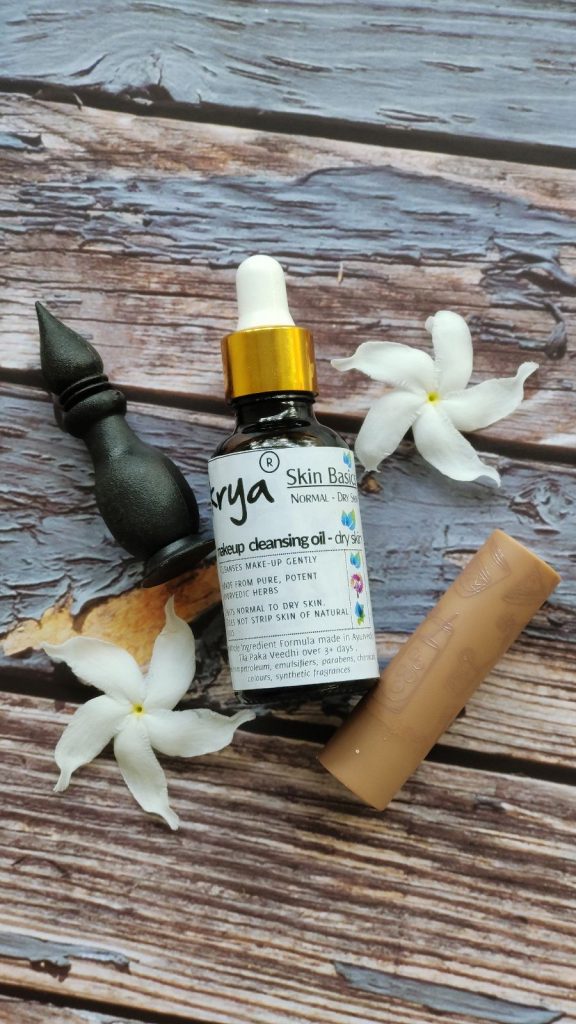
Krya Make-Up Cleansing Oil – DRY SKIN
The Krya make up cleansing oil for oily skin – an Ayurvedic makeup removing oil that helps balance and deep cleanse oily pitta or kapha type skin
The Krya makeup cleansing oil for oily skin works in 3 ways;
- It goes deep into the skin and removes impurities
- It resolves sensitivity and mild skin irritation, and balances sebum on the skin
- It balances pitta and kapha, making the skin less blotchy and pigmented
With oily skin, we have the opposite issue compared to dry skin. The bond between makeup and skin oils is much tighter as the skin already has a rich lipid profile. This makes the makeup-skin bond very close. So, we have to use a stronger set of cleansers to break the bond.
We also face an additional problem of clogged pores, sebum plugs and uneven skin complexions. This is because oil-based makeup tends to deep clog the skin srotaas over time. So, the goal here is to go really deep into the skin to remove the impurities, but do this without irritating or sensitizing skin. We also work on pitta and kapha balance so oiliness is balanced and skin is less blotchy & pigmented.
To cleanse oily skin, we use deep cleansing and unclogging herbs like soapberry, shikakai and triphala. The second concern we address is the issue of unbalanced sebum. Oily skin is easily irritable and sensitive. And, sebum production aggravates in the presence of makeup or using too many cosmetic products on the skin.
This can lead to mild redness, surface-level inflammation, and excess sebum on the skin. Herbs like arjuna, shirisha, udumbara, and mango, come to the rescue here. They help resolve sensitivity and mild skin irritation, and balance sebum on the skin.
The third concern addressed by the Krya makeup cleansing oil is skin blotchiness and pigmentation. Pitta-type skin can be blotchy and flushed looking due to imbalanced pitta dosha. The product works on balancing pitta, soothing skin, relieving redness, and evening out our complexion using kanti vardhaka (luster enhancing) herbs like lodhra, sariva, vetiver, manjishta, durva.
To manufacture this product, over a period of 3 days, we process 26 Ayurvedic herbs in a base of 8 cold-pressed organic oils and butter like karanja oil, coconut oil, and kokum butter.
The final Krya makeup cleansing oil for oily skin is a balancing, unclogging, and brightening makeup cleanser. In cold climates, even oily skin end up feeling slightly taut and stretched, especially when we cleanse skin with water and a face wash. In such circumstances, the Krya make up cleanser for oily skin can act as a gentler replacement to your face wash. However the composition of the oil will ensures that oily skin stays balanced. .
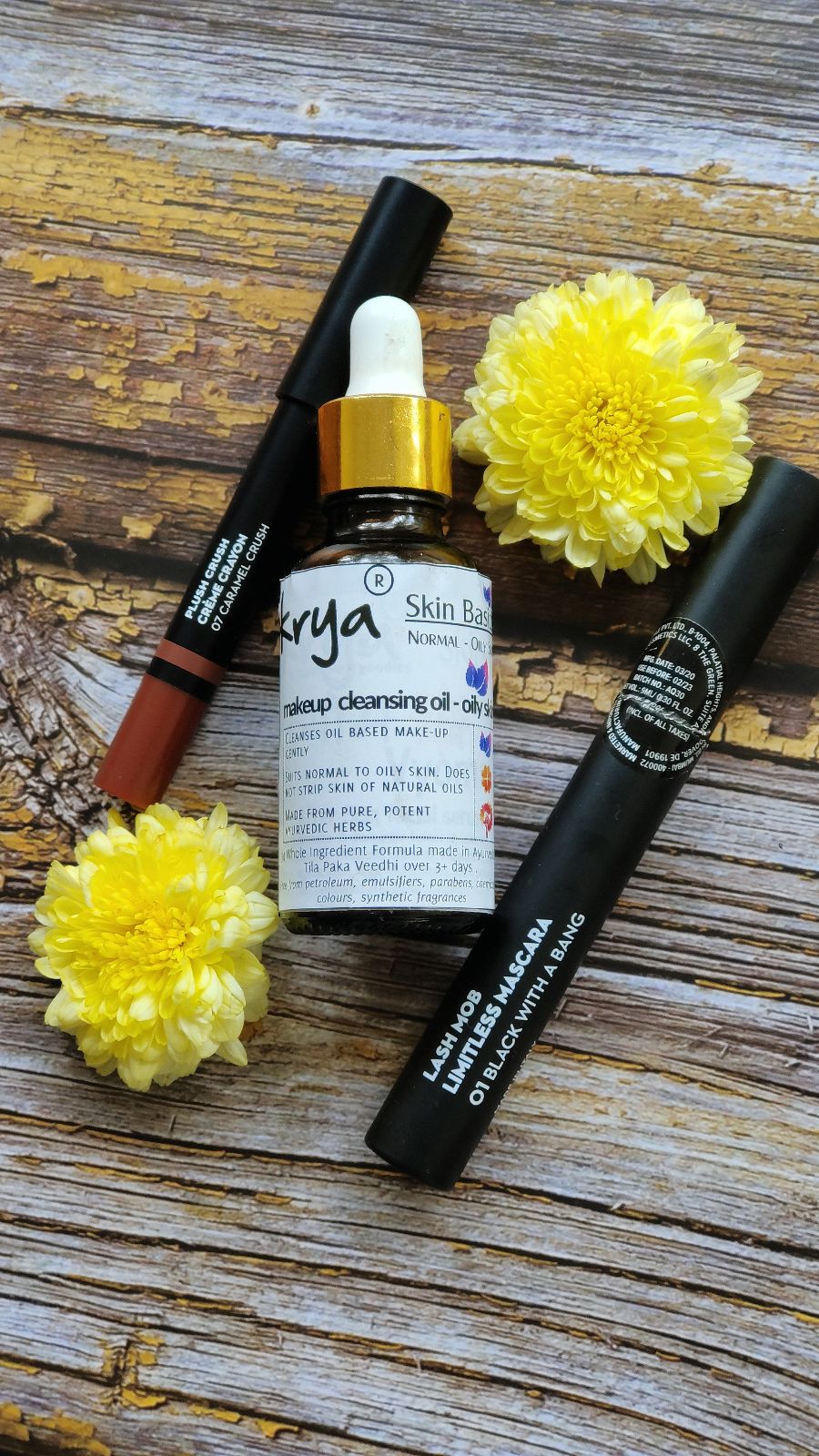
Krya Make-Up Cleansing Oil – OILY SKIN
How to use the Krya makeup cleansing oil?
FAQs
I am a dancer and wear heavy makeup on my skin. Is this product recommended for me?
Krya Make up cleanser for oily skin may be used for heavy, stage makeup. We also suggest following an appropriate skincare routine and following practices like abhyanga and pada abhyanga. These will help the body recover after practice/performances.
My teenager uses makeup. Is the Krya makeup cleanser safe to use on her skin?
Yes. The Krya makeup cleansers (both variants) are gentle, safe, and effective. They can be used on your teen’s skin. We also suggest establishing a basic skincare routine for your teen. If your teen is acne-prone, please explore Krya’s Teen products here.
Can the Krya makeup cleansing oils be used in the oil cleansing method? Or are they only for makeup removal?
Both Krya makeup cleansing variants are excellent to use in the oil cleansing method. Choose a variant depending upon your skin type. The products can also be used in cold weather as a basic skin cleanser when you don’t want to use water and one of our face wash choornams.
Here’s a video showing how to use this as a makeup cleanser.
Can I use this as a base/primer before I use my makeup?
As both products are formulated for deep cleansing, they will not be ideal as a base or primer on skin before makeup application. Instead, we suggest you use one of the Krya skin serums for this purpose. You can choose the classic skin serum (for oily skin), moisture plus skin serum (for dry skin), dyuti skin serum (for dry skin with hormonal pigmentation), vyoma skin serum (for oily, sun tanned skin), or anti-acne skin serum (for oily, acne-prone skin).
Do I need to follow up with any other cleansing product after using this product?
We suggest wiping off your makeup with the product twice. This is sufficient for most skin types. However, if you have very clogged skin and are very prone to blackheads, whiteheads, or breakouts, you can follow up with our Ayurvedic face wash choornams (according to skin type). If you are unsure about how to use a face wash powder, read this detailed post.
Can men also use this product?
Yes, men can also use this product. If makeup cleansing is not something you are looking for, you can use this product for night cleansing. You can use it once a month for deep cleansing using the oil cleansing method.

